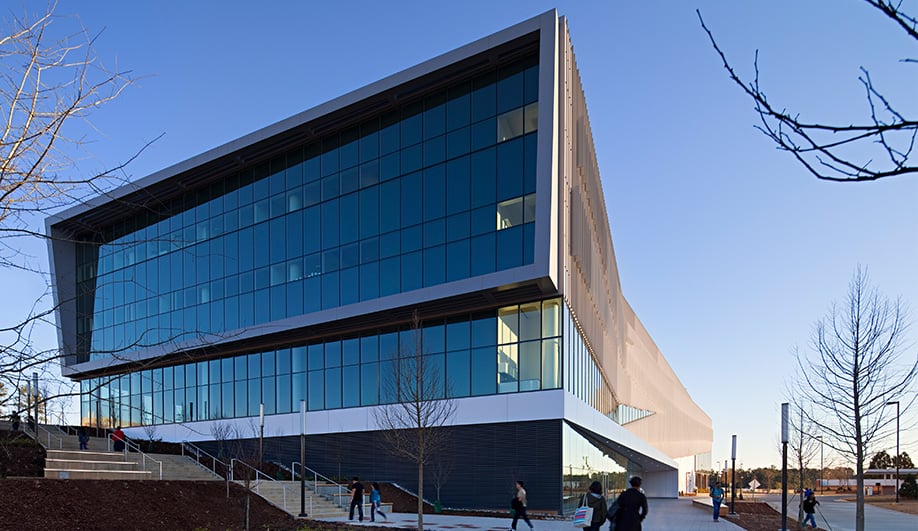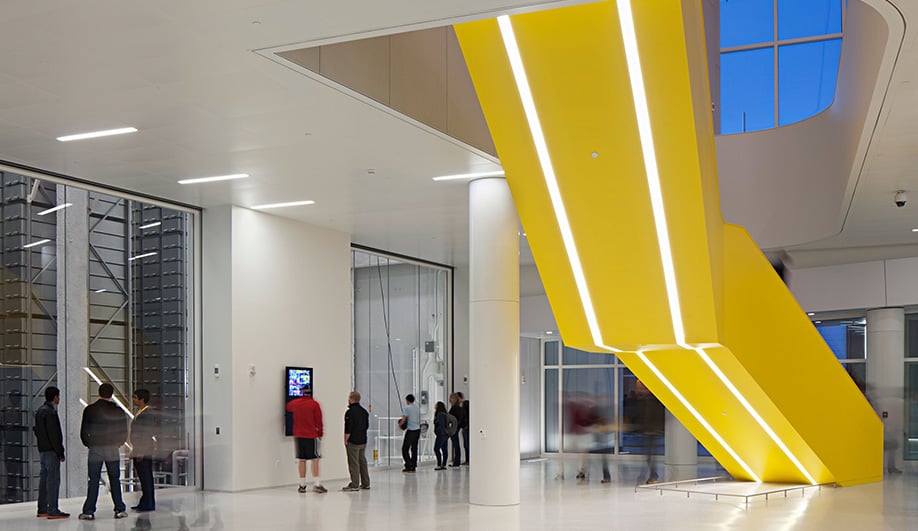Named after a former North Carolina governor, the James B. Hunt Jr. Library is Snøhetta’s latest North American project to open in recent months. Situated on a two-hectare lot on North Carolina State University’s campus in Raleigh, the learning centre represents one of the most advanced libraries in the state, and was designed to move learning beyond simply checking books in and out from the stacks.
The five-story aluminum-clad structure offers novel educational services, such as 3D printing workshops, extensive digital media production facilities and a simulation environment that allows students to try their hand at commanding a submarine.
But one of the key features is the extensive archive storage for some two-million volumes that are now located below ground level and contained in 18,000 industrial storage bins stacked four-stories high. The books are accessed via bookBot, a robotic retrieval system accessed through computer browsers. When students select titles, rotating mechanical arms move between narrow rows to locate the appropriate bin and deliver it to a librarian who then signs the book out.
The system offers a number of advantages. Besides its expediency (it takes about four minutes to order and retrieve a book) students can also see a virtual shelf of materials classified near the title they have requested. This allows students to easily expand their research.
Another reason Snøhetta opted for the automated system was to dramatically reduce the total area needed to store books – approximately one-ninth of the space occupied by traditional shelving. And in keeping with the library’s forward-thinking agenda to democratize access and technology, Snøhetta has let bookBot remain a visible feature within the building’s design.
Throughout the library, generous amounts of open space encourage small study groups and meetings to form, and visible connections between floors make the entire library look and feel accessible and inviting. Students can choose between settling into one of the main floor’s seating areas – furnished with chairs from Fritz Hansen and Knoll – or gathering within common areas. These “disruptive learning spaces” recognize the power of chance encounters, and a palette of brilliant yellows, reds and greens is intended to celebrate physical space as essential to intellectual stimulation.








